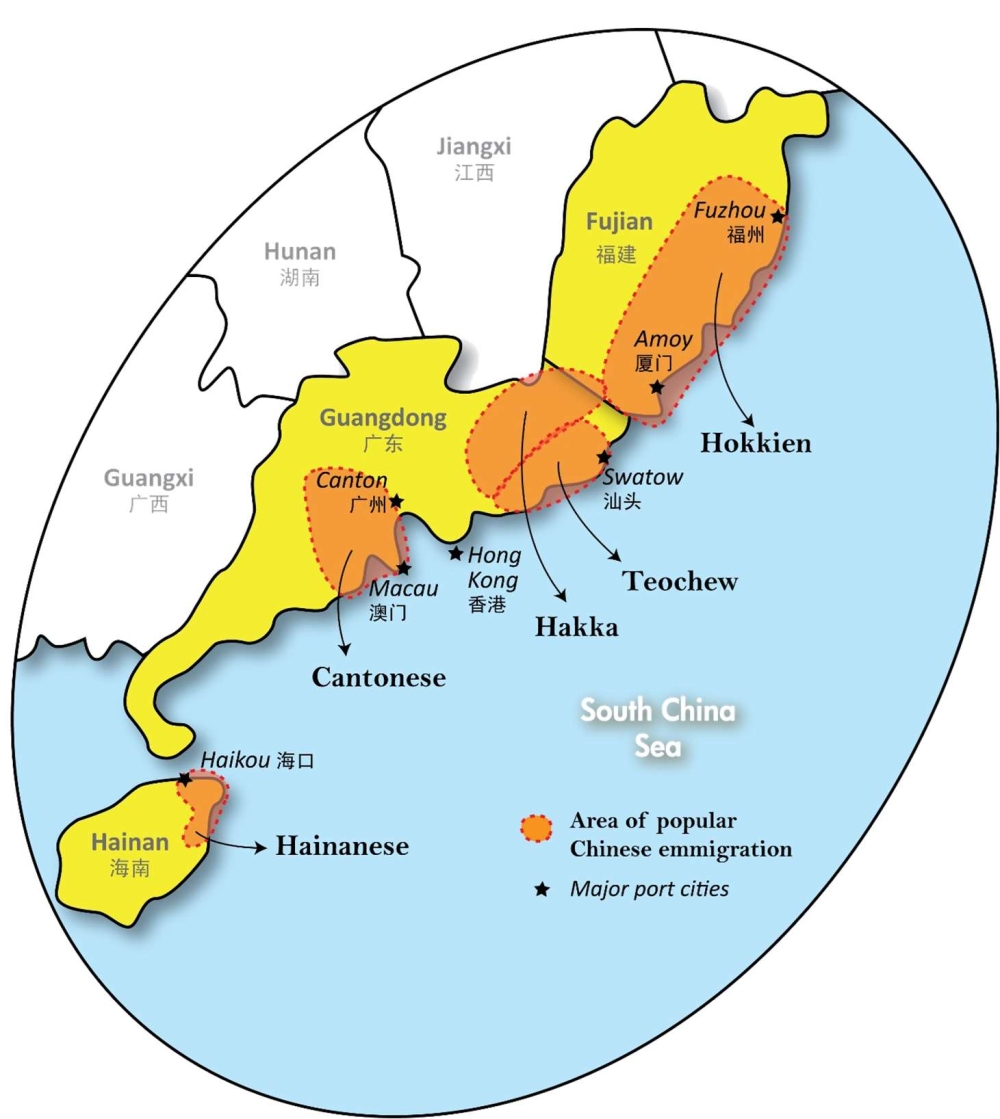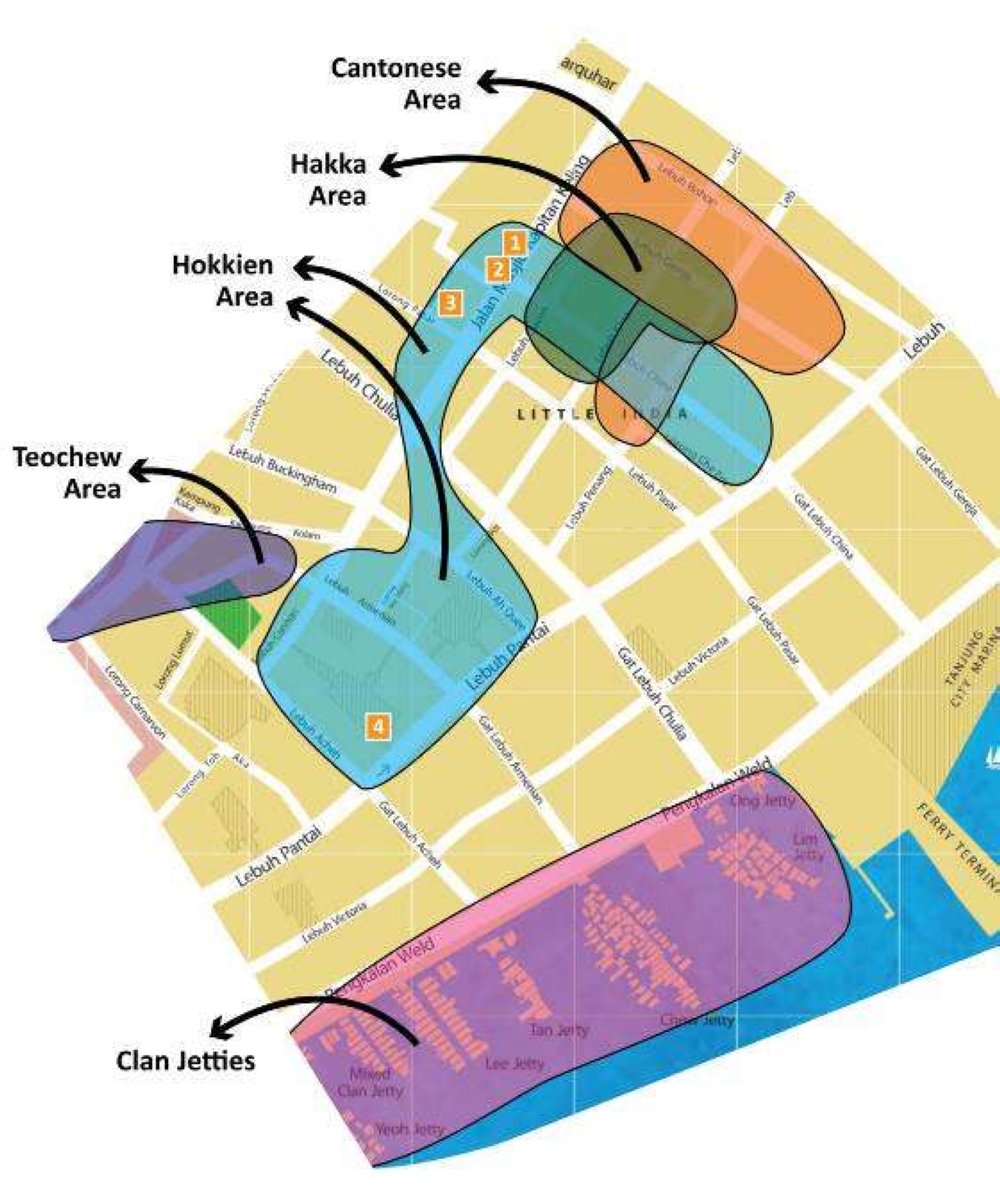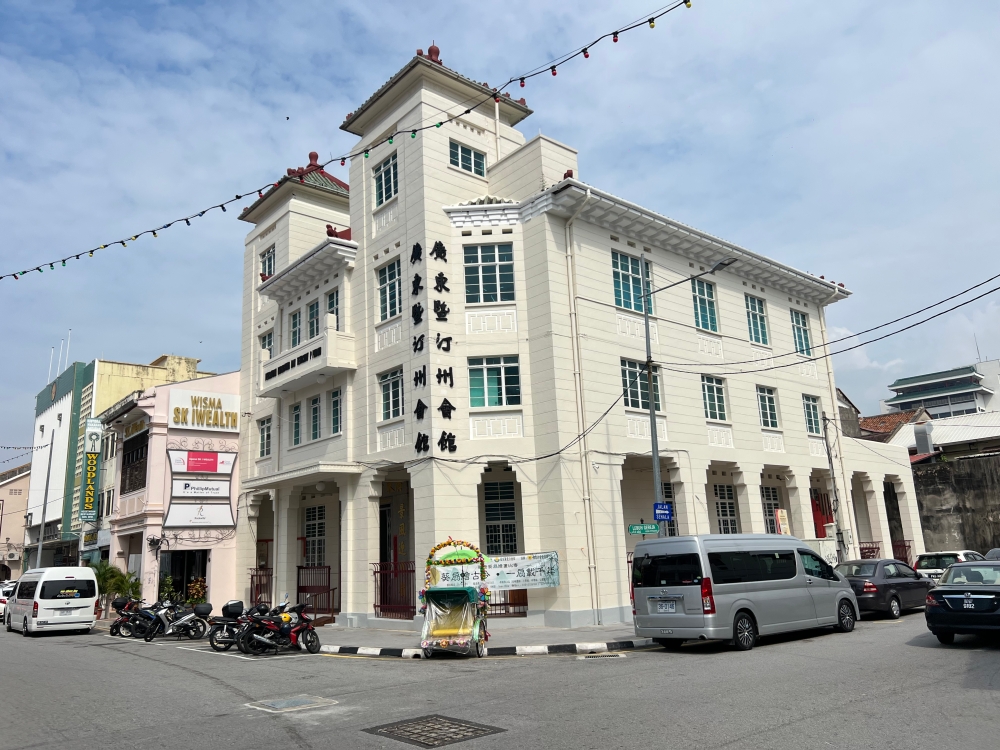
Beyond Hokkien: The lesser-known communities that shaped George Town

Many associations are located along King Street. Pictured here are Choong Shan Wooi Koon (right), Thai Pak Koong (Ng Suk) Temple established by the Hakkas (centre), and Toishan Ninyong Wui Kwon (far left). — Picture by Opalyn Mok
Saturday, 16 Aug 2025 7:00 AM MYT
GEORGE TOWN, Aug 16 — Penang may be known for its Hokkien-speaking community, but in reality, only half of the ethnic Chinese here are Hokkiens. The rest come from a rich tapestry of backgrounds, including Cantonese, Hakka, Teochew, Hainanese, Hockchew, Shanghainese and Guangxi.
As Chinese migrants arrived in Penang in the 18th century, they began to form enclaves of communities that spoke the same language, including forming provincial-based associations to assist fellow migrants from the same districts in China.
Among the first Chinese migrants to come to Penang from the 18th to the early 19th century were the regionally-based Chinese merchants, including some Baba Nyonya from Melaka, a community of 500 people led by Koh Lay Huan from Kuala Muda, and indentured workers from Fujian and Guangdong who spoke Hokkien and Cantonese.
The second wave of arrivals, from the early 19th to the early 20th century, were Chinese coolies from southern China, representing the main dialect groups of Hokkien, Cantonese, Teochew, Hakka, and Hainanese.

The popular provinces that the Chinese migrants came from. — Map courtesy of Clement Liang
According to Penang Heritage Trust (PHT) president Clement Liang, the main street for the early Chinese settlements was China Street, which was known as “tua kay” (main road).
He said the Goddess of Mercy Temple and the Chinese Chamber of Commerce were strategically located at the junction, facing the sea for good fengshui.
The secondary axis for the Chinese settlements was King Street, where many of the clan temples and provincial associations were located.
At that time, the Cantonese-speaking migrants lived around the Pitt Street, Bishop Street, Church Street, King Street, China Street and Penang Street enclave.
Penang Street, where the Kwangtung and Tengchow Association was located, was also known locally as ‘kwangtung kay’ (Guangdong Street).
Intersecting with the Cantonese enclave is the Hakka enclave, which spreads from Church Street to King Street, Queen Street and China Street.
The Hokkien area covered a larger area as there were more Hokkien-speaking migrants at the time, and the community was largely spread out across the inner city.
Interestingly, all three enclaves also intersected with Little India.
Meanwhile, the Teochew enclave is located slightly further away nearer to Carnavon Street and Chulia Street.

A map showing the different enclaves in George Town during the late 18th to 19th century. — Map Courtesy of Clement Liang.
Liang said over the years, these communities shifted and slowly spread out all over the state, but there were still small pockets of the different communities in George Town.
“There were the dim sum shops by the Cantonese communities in Cintra Street and also the goldsmith shops along Campbell Street,” he said.
The medicine halls and pawn shops around town were mostly owned by the Hakka people, while the Teochew were merchants and petty traders.
“The Hainanese arrived later than the other groups so they ended up mostly as cooks for European and wealthy Chinese households,” he said.
He said at that time, the wealthy Chinese households were merchants, revenue farmers dealing in opium, gambling and alcohol, financiers of coolie labour recruitment, and traders who owned shops, shophouses, godowns and trading vessels.
However, the majority of the Chinese migrants worked for wages.
The Cantonese were commonly carpenters, farmers, goldsmiths and brick makers, while the Hokkiens were merchants, tailors, shopkeepers and coolies. As for the Hakkas, they were merchants, traders, farmers and fishermen.
Liang noted that the numbers of the different dialect groups have dwindled over the years, due to relocation and lower birth rates.
Fading dialects
According to him, currently, 50 per cent of the population are Hokkien, 15 per cent are Cantonese, 10 per cent are Hakka, 15 per cent are Teochew, five per cent are Hainanese, and the remaining five per cent consist of Hockchew, Shanghainese, and Guangxi.
“Sadly, not many of them can speak their mother tongue due to the adoption of Mandarin as the main Chinese language in education since the 1970s,” he said.
He added that very few can speak Hockchew, Shanghainese, Guangxi, and Hainanese now.
“Maybe only the older generation can speak it, but once they are gone, these languages will be forgotten,” he said.
This isn’t only happening in Penang. The original districts of these dialect groups in China are also losing touch with their languages due to the adoption of Mandarin.
Realising the importance of keeping their mother tongue alive, Liang shared that local associations such as the Penang Hakka Association have started offering online Hakka classes to encourage the younger generation to learn the language.
“Some of the associations are trying to organise events where they use mainly their mother tongue,” he said.
Even though Hokkien used to be the lingua franca in Penang—spoken even by other ethnic groups like the Malays and Indians—Liang said it is slowly dying too.
The people of Guangdong and Tengchow
Contrary to popular assumptions, the people who arrived from the Guangdong (also spelled Kwangtung) province in China were not all Cantonese-speaking.

The Kwangtung and Tengchow Association along Penang Street. — Picture by Opalyn Mok
President of the Kwangtung and Tengchow Association, Datuk Lio Chee Yeong, said the people from Guangdong, previously known as Canton, also spoke Hakka, Hainanese and Teochew.
“Most people assume that if you originated from Guangdong, you must be Cantonese but this is a misconception,” he said.
He said the migrants from Guangdong who came to Penang were from different districts in the province and spoke different dialects.
They eventually formed provincial-based associations according to the dialects they spoke and these associations are now under the Kwangtung and Tengchow Association as the umbrella body.
“The Cantonese were from districts such as Nanhai, Chongqing, Samsui, Tong An, Xinhui, Soon Tuck, Phun Yue, Siew Heng Foo, Choong San and Toishan Ninyong,” he said.
The Hakkas were from Fooi Chew, Taipu, Yong Ting, Tsen Lung, Kar Yin and Tengchow.
“Tengchow and Yong Ting were not from the Guangdong province but since they spoke Hakka, so they joined under our association as they can communicate with the other Hakka associations,” he said.
The Teochew and Hainanese communities were small, so they each formed a single association, the Teochew Association and the Hainan Association, respectively, he added.
Early schools
With the formation of these different provincial associations, members also began setting up schools to provide education for their children.
Education was important among the Chinese communities and at a time before Mandarin was popularised here, the schools they set up taught lessons in their own mother tongue, such as Hokkien, Cantonese, Hakka and Teochew.
The Toishan Ninyang Wooi Kwon, who spoke Xinning (now known as Toishan), used to have a school at their association on King Street, but it was soon closed.
Meanwhile, some of the other schools started by the various associations remain open to this day.
The Hakka established Shih Chung School in 1908, and today, the main school has been converted into a special education primary school, with a branch also in Sungai Nibong.
The Hainanese set up Aik Hua School on Muntri Street and recently, it was relocated to a new building outside the inner city, in Sungai Ara.
The Ng Fook Thong Temple, built in 1898 on Chulia Street is recorded to have the first Cantonese school in Malaysia. The school has since moved and was renamed as SJKC Shang Wu in Air Itam.
The Teochew Association, along with businessman Lim Lean Teng, founded Han Chiang School in 1919 and today, it has expanded to include a private secondary school and a university-college.
All of the primary schools today are national-type schools under the Education Ministry and students are taught Mandarin, Malay and English.
***
Beyond any shadow of doubt the MOST "hensem" men have been the Teochews 😂😂😂 They brought with them from China the famous Char-Koay-Teow. Teochew men are also very charming, sweet and lovable, wakakaka.
The dialects are slowly fading away in Penang, largely the mainstay of old folks like me - I can speak Hokkien , Cantonese and Hainanese dialect, even a bit of Teochew.
ReplyDeleteMany younger generation, even Penang-born and bred only speak Mandarin.